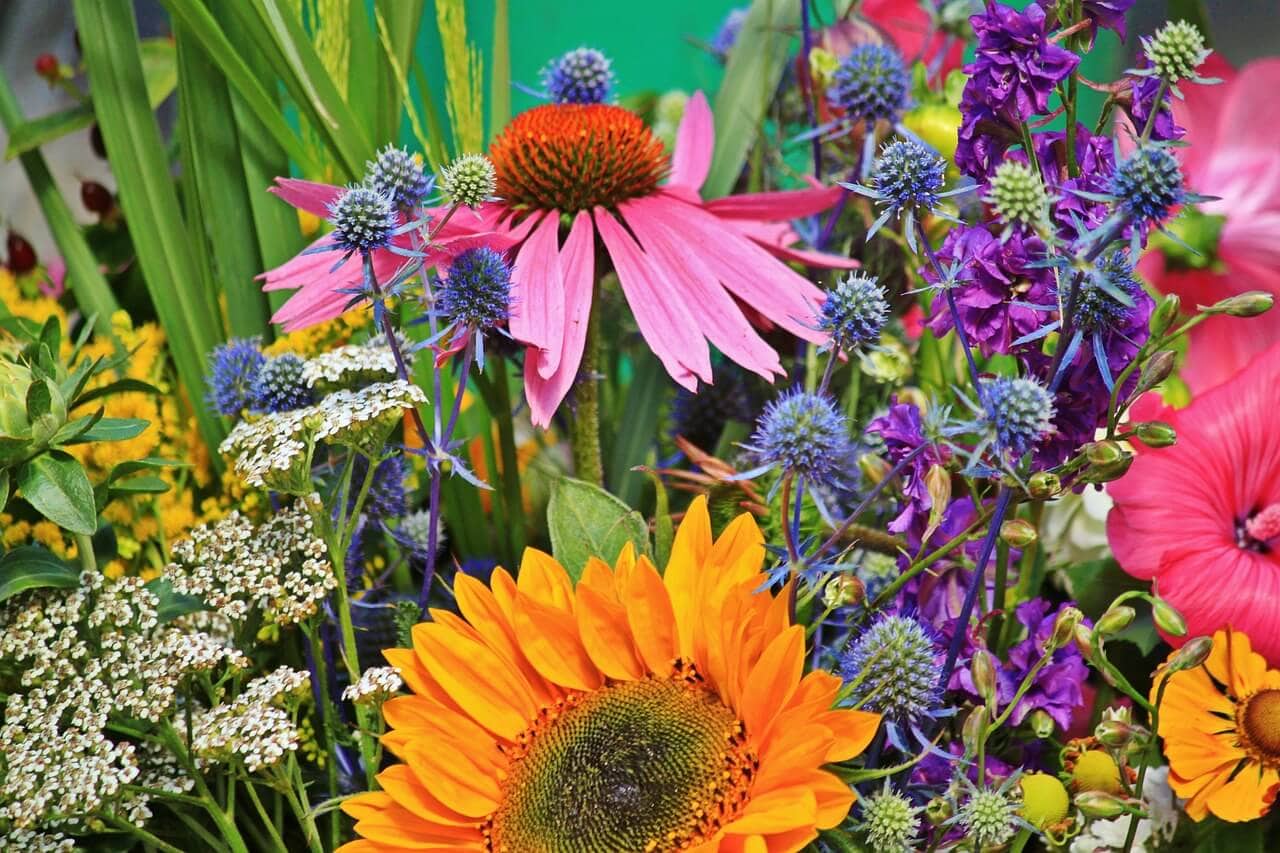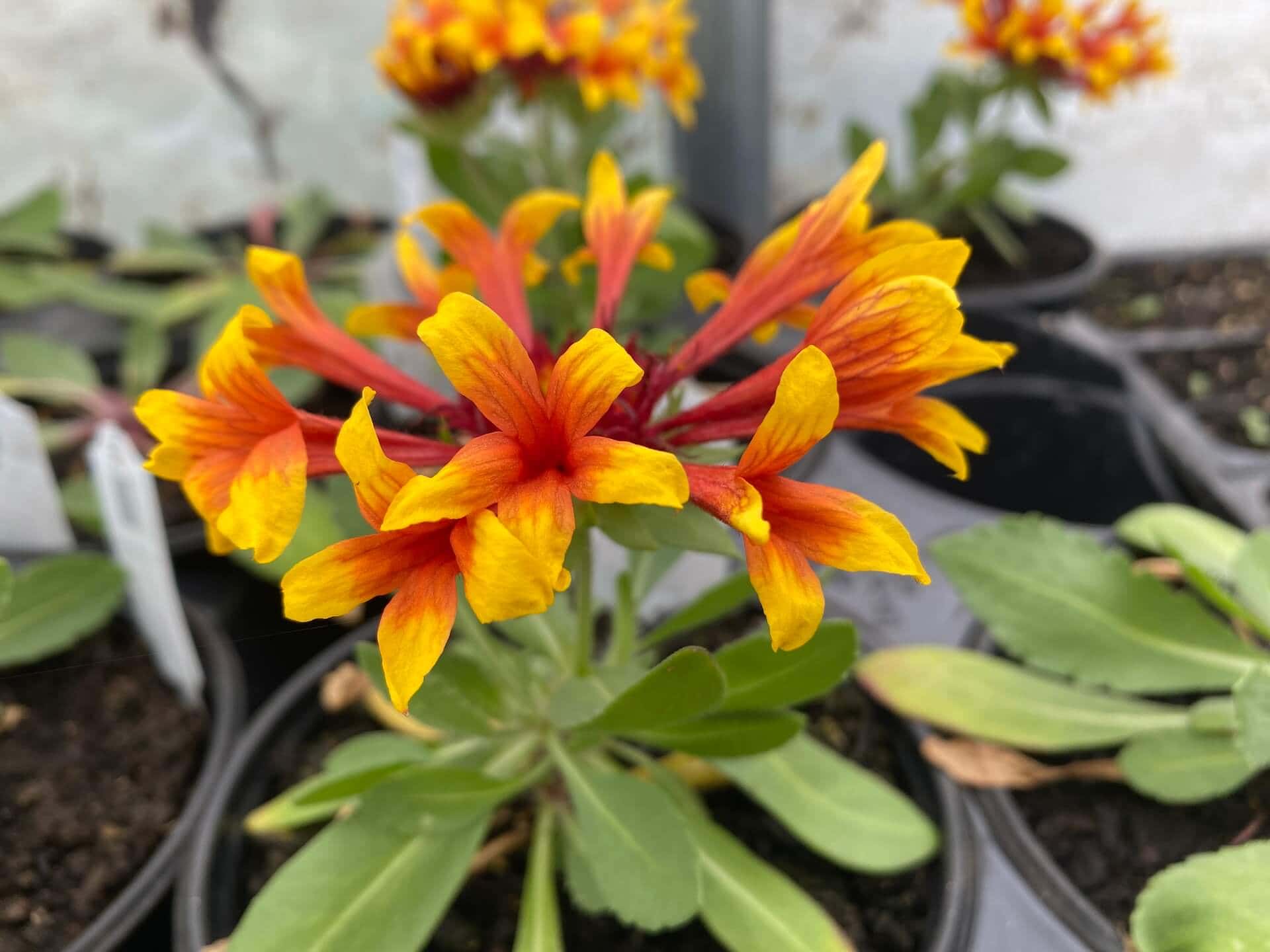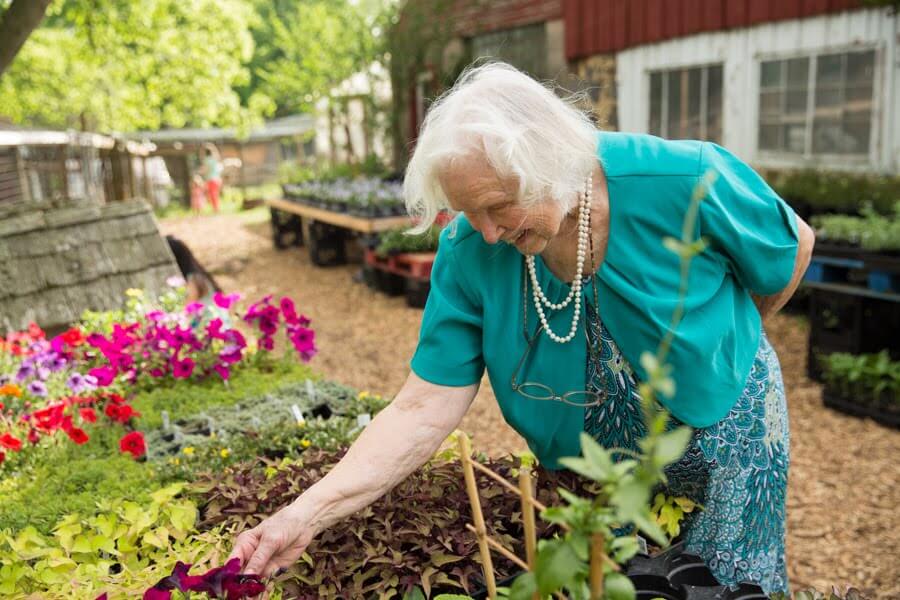This post may contain affiliate links. Probably doesn’t, but it might. It doesn’t cost you anything extra but if you use these links to buy something, we may earn a commission.
Table of Contents
Create a Constantly Blooming Garden with Perennial Flowers
Most plants outside are just now coming out of dormancy, but inside the greenhouse, there are lots of plants growing. We have thousands of seedlings ready to move to their next size containers and then for you to take them home. There is an exciting assortment of perennial flowers for you this year. All those baby plants are what can make your gardening dreams come true.
Confused about annuals and perennials? Just a quick review: annual flowers usually have a bloom season from spring through fall, and you need to plant them each year. Perennial flowers have a bloom period of three to ten weeks, but you only have to plant them once and they come back each spring to give you more flowers. Today we are talking about the perennials that we are growing for you this year.
You have probably heard about “Native Perennials.” These are the plants that are native to your area and are tolerant of all the quirks of heat, cold, and humidity in your region. They are also disease-resistant, deer and rabbit resistant, and very hardy in the garden. We have searched out varieties that fit well in a home garden in growing zone 7. Other varieties are great in a naturalized landscape but may be too aggressive for a limited area.
By the way, “invasive” is the term used for non-native plants, and “aggressive” is the term used for native plants. They both mean the plant will spread very quickly and dominate a growing area, often crowding out other plants.
We expect these plants to be available mid-May. I suspect there will be more than what made this list, as we are always trying new plants. As far as we are concerned, the more plants, the better!
Amsonia ‘Blue Ice’

Amsonia is an easy-growing native perennial that needs at least half-day sun to keep the blue flowers growing. It is deer-resistant, drought resistant, and a great pollinator attractor. Although Amsonia weathers dry weather well, if there is a prolonged spell of no rain, then watering will help keep the plant healthy. To encourage a bushy habit, pinch back the tips of the plant in the spring before it starts to bloom.
Aquilegia mix ‘Columbine’

Columbine are some of the early blooming perennials, showing off in May and June. The bi-color cups are set off with long spurs, which make for a striking display. There can be re-gold, lavender-blue, white-yellow, and purple-gold combinations for the flowers. A great plant to have in a hummingbird garden, Aquilegia does well in half-shade to mostly shade. It prefers moist soil, so regular watering is important. Cutting the flowers or deadheading will help promote the production of more flowers. Aquilegia re-seeds easily so you can wind up with multiple plants each following year. Also known as “Columbine.”
Asclepias ‘Cinderella’ and Asclepias ‘Gay Butterfly Mix’ – Butterfly Weed

Asclepias blooms in July and August, and attracts dozens of butterflies to the red, orange, and yellow flowers. The flowers are also great in cut flower arrangements. Asclepias does best in full sun and is hardy in zones 4-9. This perennial is also deer and rabbit resistant, heat and drought tolerant, and cold tolerant. It is a survivor! Also known as “Butterfly Weed.”
Aster laevis ‘Purple Dome’
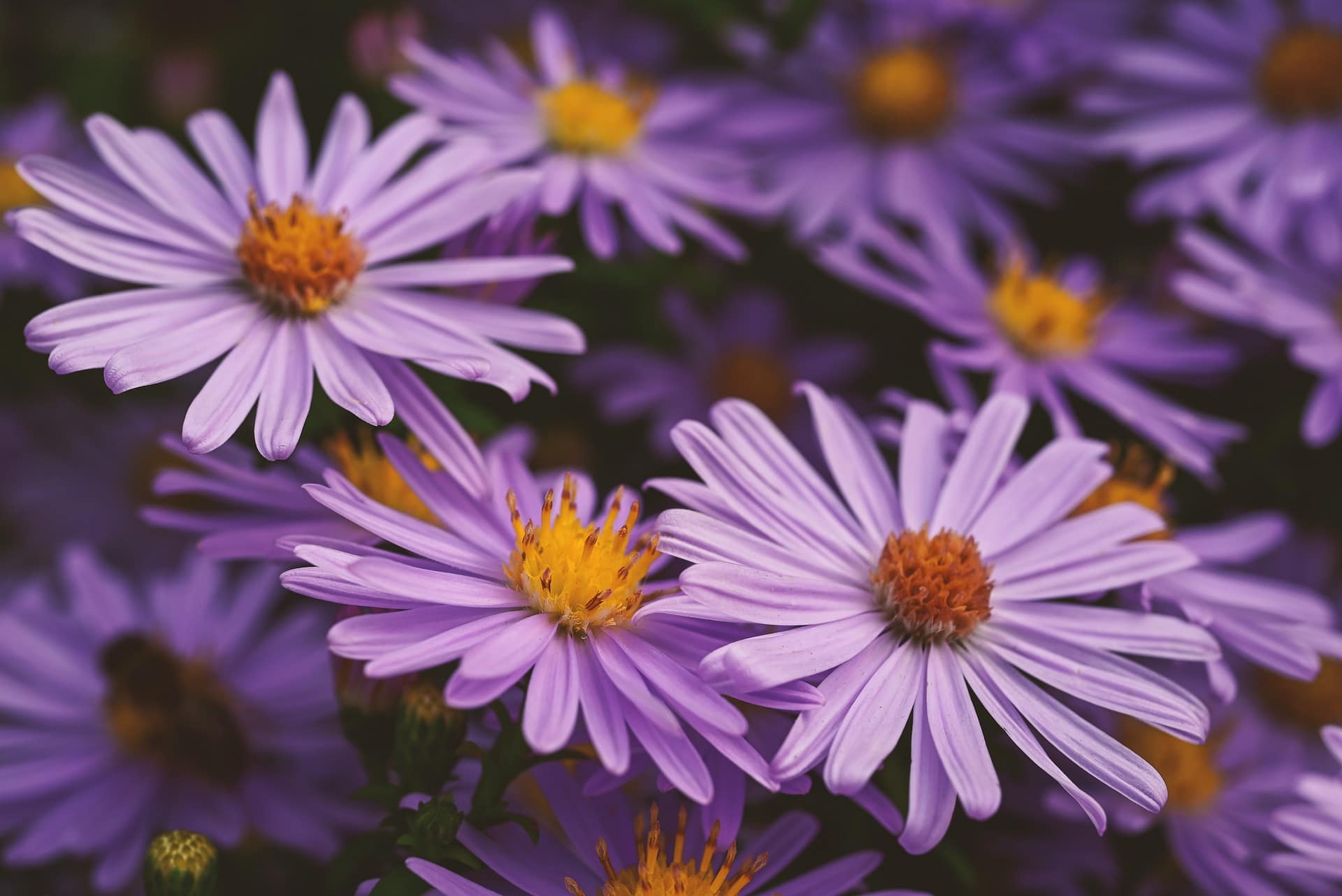
There are lots of aster varieties! Each has its own charm and characteristics: height, bloom time, color (variations from dark purple/blue to magenta pink), and sun/shade preferences. Very reliable and dependable. ‘Woods Blue’ has a low, rounded habit and thrives in half-shade to sunny areas. This variety has profuse blooms on a compact habit, about 12 inches high. The blue flowers have a bright gold center, and this variety has a longer bloom period than many varieties. ‘Purple Dome’ has darker flowers that are purple. Both are reliably hardy asters that are pollinator-friendly and deer resistant.
Athyrium ‘Lady Fern’ and Athyrium ‘Regal Red’ – Fern

There are many varieties of ferns. Athyrium, Osmunda, and Matteuccia are just the tip of the list of fern varieties. Ferns do not flower, but the foliage is beautiful and very different from most other plants. There are numerous ferns with variegated colors on the leaves, such as the Regal Red Japanese Painted Fern, Athyrium niponicum. Ferns thrive in full shade with consistent watering. The young shoots, or “fiddleheads,” of ferns are edible and considered a delicacy.
Calamagrostis ‘Feather Reed Grass’

Feather Reed Grass is very hardy as well as striking, growing up to 6 feet tall, with spikes that are attractive on their own or great added to flower bouquets. It prefers full sun and does best with moderate watering. The feathery spikes dry naturally on the plant for the winter, adding a striking vertical element in the garden. Feather Reed Grass is a natural habitat for small birds and is used to help prevent erosion on slopes.
Coreopsis ‘Double the Sun’
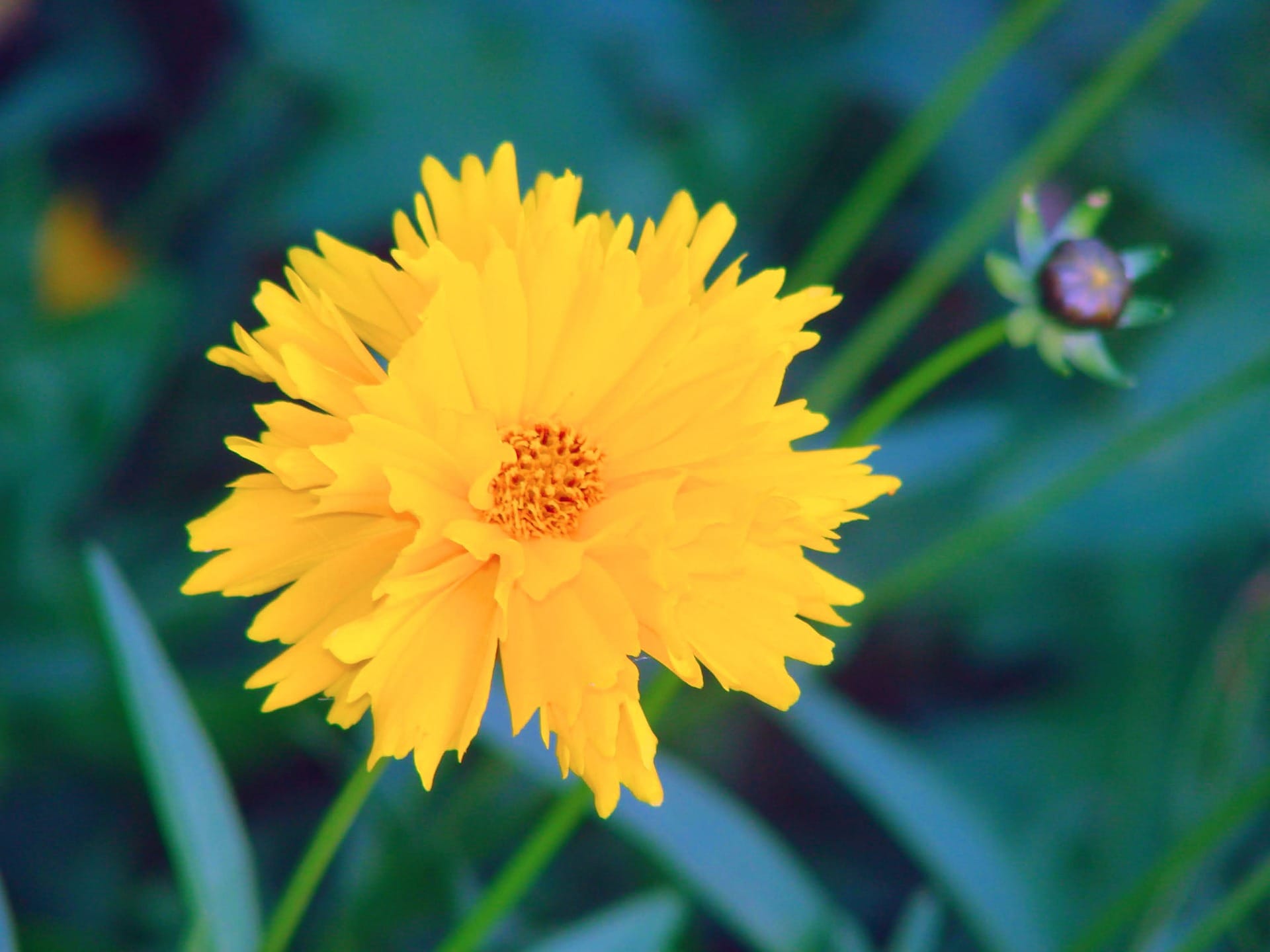
Coreopsis is one of the longer-blooming perennials, showing off brilliant daisy-like yellow flowers nearly all summer. This variety is a double, with an extra layer of petals to make a very showy display in the garden. A sun lover, Double the Sun remains a compact size at 12-14 inches height and width.
Dicentra ‘Spectabilis’ – Bleeding Heart

Dicentra is very reliable and grows well in full sun to half-shade to nearly full-shade. Your plants that get half-day sun will be larger in both height and width than the ones in full shade. Plants in full sun will bloom sooner, but will also go into dormancy in the summer. Profuse flowers can also be cut for bouquets. This perennial blooms in late spring, so we are always thrilled to see the graceful flowers. Also known as “Bleeding Heart.”
Echinacea ‘Green Twister’ ‘Magnus’ – Cone Flower

There are many different coneflower varieties! ‘Green Twister’ produces prolifically with lime green petals and a purple center, with the petals curving upward. ‘Magnus’ has large reddish-pink cone flowers with deep orange centers. Echinacea is a butterfly magnet, and these varieties are easy to grow. They withstand drought, humidity, and harsh winter weather. This native perennial does not need dead heading. Once the flowers are done, the central mound produces seeds, providing food for goldfinches and other birds. Full sun is best for all echinacea varieties. Also known as “Cone Flower.”
Eupatorium ‘coelestinum’ – Joe Pye Weed
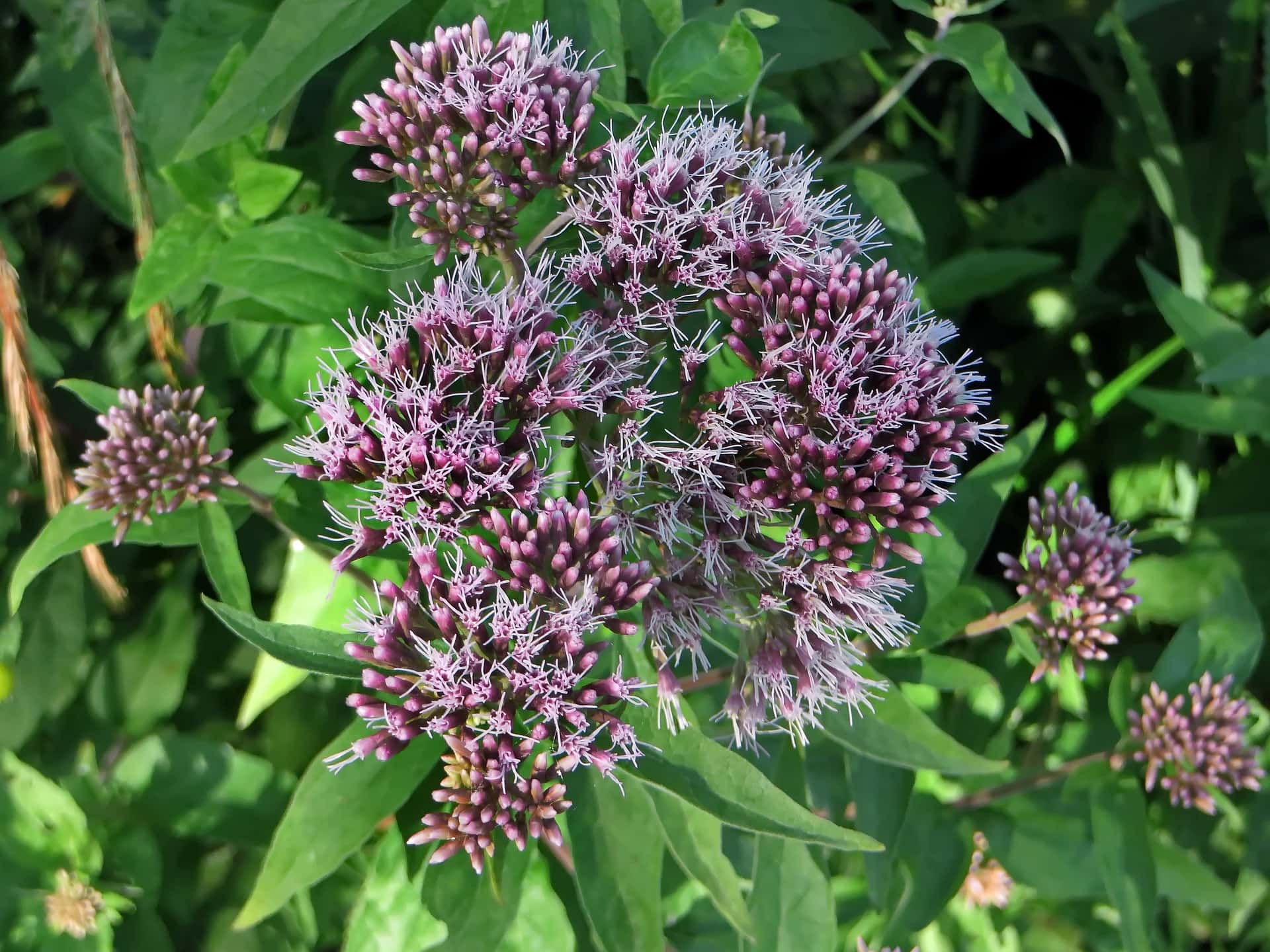
‘Little Joe’ Pye Weed has all the benefits of its larger sized sibling but in a more compact form. Very hardy, disease-resistant, attracts swallowtails and other butterflies and pollinators by the dozen, charming clusters of rose pink to lavender flowers from late July through September, ‘Little Joe’ is more compact at 3-4 feet tall, and spreading slowly to about 3 feet in diameter. This plant prefers regular water, loves to be near ponds or lakes, and thrives in full sun to half-sun conditions. Now taxonomically known as Eutrochium dubium, Joe Pye Weed is still called Eupatorium or just Joe Pye Weed by gardeners. (Butterfly not included!)
Heuchera ‘Green Spice’ – Coral Bells

Bright green leaves with dark red veins make this perennial stand out in the shade. It has these beautiful leaves as well as delicate spikes of pink flowers. The flower spikes hold up well in cut flower arrangements. ‘Plum Pudding’ is fast growing, will flower the first year, and has a tidy, mounding habit. This variety is more heat and humidity tolerant than others and thrives in full-shade to half-shade areas. Also known as “Coral Bells.”
Hosta ‘Aureo Marginata’

Hostas are the workhorses of a shade garden. Although they thrive in the shade, they can also handle half-shade and even sunny conditions. There are many varieties with varying colors of leaves. ‘Aureao marginata’ has gold rims around each leaf, adding a light highlight to your shade garden. The plants do send up spikes of purple flowers in the early summer, which are an attractive addition to cut flower bouquets, but the foliage is the primary attraction. A cautionary note: Hosta leaves can be toxic to pets.
Hydrangea ‘Game changer Pink’, and Hydrangea ‘Gamer Changer Blue’

Hydrangea is a spectacular bush with large flowers that bloom for many weeks in the summer. The name comes from the Greek word for water, referring to the plant’s need for consistent watering. If you maintain an acidic pH level below 7, your plant will produce blue flowers. An alkaline level pH above 7.5 will produce pink flowers. If your soil is right at the neutral 7.0-7.5 level, then your plant can produce blue and pink flowers at the same time. In many cultures, hydrangeas are a symbol of gratitude, and are often given as gifts to express appreciation. This variety has been developed to bloom both earlier in the season and longer in the season than most other varieties.
Leucanthemum ‘Betsy’ and ‘Real Charmer’ – Shasta Daisies

Leucanthemum is a long-lived perennial which produces masses of single white flowers. The bright gold center makes for an attractive flower in bouquets. The bloom time can last from early June through late July. Cut frequently to prolong the bloom period. Hardy in zones 5-9, Shastas grow best in full sun and well-drained soil. You may be able to get a second round of flowers by cutting the plant back when the blooms are done. Very popular with pollinators. Also known as Shasta daisies
Lobelia cardinalis ‘Starship Scarlet’ and ‘Siphilitica’ – Cardinal Flower
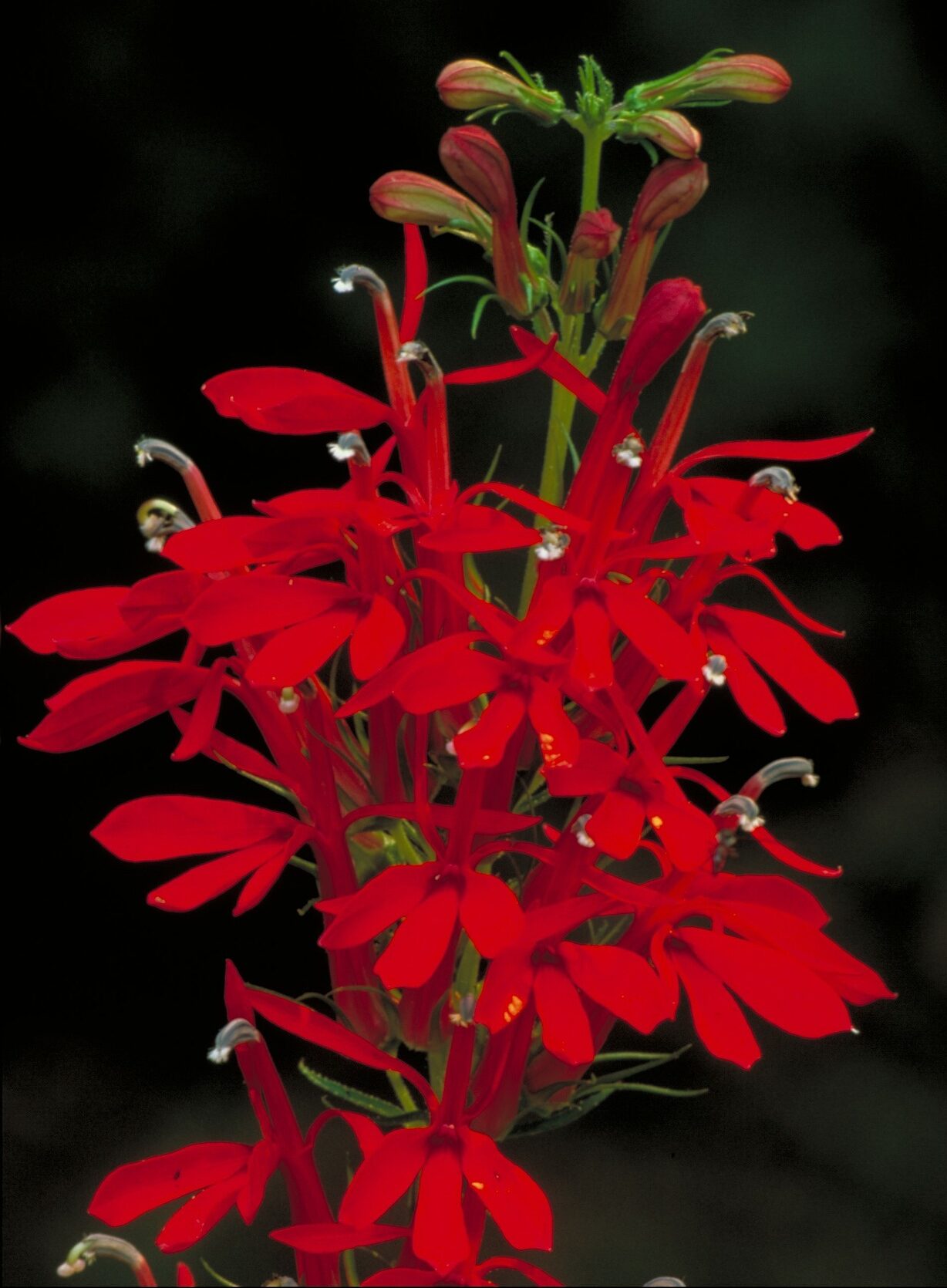
Penstemon Digitalis ‘Blackbeard’ – Beardtongue

Penstemon is a tall hummingbird favorite which is very drought tolerant once established. The bronze leaves and pink/lavender trumpet shaped flowers provide a nice dramatic backdrop for the garden. This native can handle heat and cold without any problems. Also known as “Beardtongue.”
Phlox paniculata ‘Emerald Blue,’ ‘Blue Moon,’ and ‘May Breeze’ – Garden Phlox

Not to be confused with Creeping Phlox, the groundcover variety, Garden Phlox can grow from 18-36 inches tall. These varieties are mildew resistant, an important feature for our area. Phlox are beautiful in cut flower bouquets and bloom from July into September. The flowers can be blue, pink, or white.
Sedum ‘Dazzleberry’ and Sedum ternatum, Stonecrop ‘Lime Zinger’

These are a great variety of sedums, from low growing to upright, with different colored leaves, and leaf sizes. They look like members of the cactus family, but can be hardy perennials in zones 3-10, depending on the variety. The variety, Lime Zinger, has bright green leaves edged with red, as well as hot pink flower heads in the late summer/early fall. Sedum are very heat, sun, and drought tolerant, and are perfect for areas where you do not have easy water access. Although the leaves of sedum are usually the star attraction, ‘Lime Zinger’ produces a beautiful pink flower cluster for several weeks in the late summer. Some varieties are also called “Hens and Chicks.”
I hope you have some new ideas for your garden. There are great varieties just waiting for you to take them home!
Happy planting!
~ Ruth
Additional resources:
North Creek Nurseries has a lot of information about Native Perennials and many of the varieties available. It is geared more towards large-scale growers than individuals, but the information about each variety is first-rate and applies to all of us.
One of our favorites for seeds is Johnny’s Select Seeds. Their “Grower’s Library” has many videos showing their trials of different varieties plus a lot of information about different vegetables, herbs, and flowers. Well worth browsing through.
